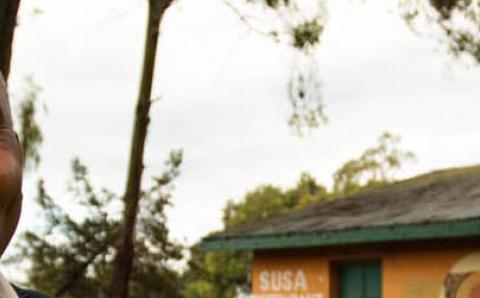Years ago, two psychologists pioneered a therapeutic technique called the “Johari window.”
It’s a window into the self with four panes. The first pane includes both what I see about myself and what others see of me. The second is what others see about me but I can’t see myself. In the third pane, I see the part of me that others can’t see. The fourth pane is the hidden self not seen by myself or by others.
I suspect that churches and denominations could benefit by looking at themselves through this window. Let’s take a fictional suburban Christian Reformed congregation as seen by a faithful, active, and lifelong member.
- Pane One: I see a church that’s been a fixture in a subdivision that was once new. I see dedicated members, although I’m worried about slippage in the younger generation. The community sees a stable congregation that has continuously filled a role in our community for decades.
- Pane Two: I’m not fully seeing it, but some in the community describe our church as remote and only for a certain type of people. It’s probably the same way I view the Church of the Latter Day Saints: separate from my world and for people unlike me.
- Pane Three: When I’m really honest, I’m conflicted. We love the Lord and seek to do his will, but our minister is entering his 15th year here and seems tired; we lose more young adults and young families than we gain, and our evangelistic efforts happen only by proxy as we give faithfully to CRC mission agencies and those of others.
- Pane Four: I don’t really see it, nor do I have confirmation from others in my community, but a church consultant working with our council has told us that we’re entering into a period of significant decline.
So what is the identity of this church? Solid and stable? Clannish and set-apart? Faithful yet searching? In trouble? In fact, all four descriptions make up this church’s identity.
We could complete the same exercise with our denomination. The first pane alone gives rise to conflicting views. I see a denomination that is doing amazing things through the Holy Spirit, yet some suggest we are a denomination in trouble.
My hunch is that neither I who see the glass half full nor those who see it half empty are getting the whole picture. We must take into account all four panes.
Recently the CRCNA’s Strategic Planning and Adaptive Change Team (SPACT) found that one of the challenges we face—identified by listening to you—is that we are losing our sense of shared identity. We need to see more clearly who we are and find our unity in a shared vision. And we should begin with the first step suggested in Matthew 16:15-18.
When Jesus asked his disciples, “‘Who do you say I am?’ Simon Peter answered, ‘You are the Messiah, the Son of the living God.’ Jesus replied, ‘Blessed are you, Simon son of Jonah, for this was not revealed to you by flesh and blood, but by my Father in heaven. And I tell you that you are Peter, and on this rock I will build my church, and the gates of Hades will not overcome it.’”
The church is built upon confession—the confession that we serve the Messiah, the Son of the living God. What should always be seen—by each of us, all of us, and those in our communities—are churches and a denomination that make this confession.
From this confession we will rediscover our shared identity, an identity based not on ethnicity or immigration, nor on political agendas, nor on seeking to model the success of some other church or denomination. God has promised: we will not be overcome but will flourish, providing light so that all may see.
About the Author
Steven Timmermans served as the executive director of the Christian Reformed Church in North America from 2014 to 2020.
Steven Timmermans se desempeñó como director ejecutivo de la Iglesia Cristiana Reformada en América del Norte de 2014 a 2020.
Steven Timmermans는 2014 년부터 2020 년까지 북미에서 기독교 개혁 교회의 집행 이사로 재직했습니다.









